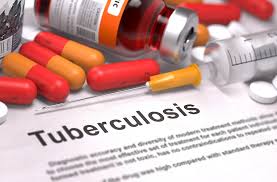- Home
- Editorial
- News
- Practice Guidelines
- Anesthesiology Guidelines
- Cancer Guidelines
- Cardiac Sciences Guidelines
- Critical Care Guidelines
- Dentistry Guidelines
- Dermatology Guidelines
- Diabetes and Endo Guidelines
- Diagnostics Guidelines
- ENT Guidelines
- Featured Practice Guidelines
- Gastroenterology Guidelines
- Geriatrics Guidelines
- Medicine Guidelines
- Nephrology Guidelines
- Neurosciences Guidelines
- Obs and Gynae Guidelines
- Ophthalmology Guidelines
- Orthopaedics Guidelines
- Paediatrics Guidelines
- Psychiatry Guidelines
- Pulmonology Guidelines
- Radiology Guidelines
- Surgery Guidelines
- Urology Guidelines
New effective TB drug with lower tendency to develop resistance

A new experimental TB drug has been found to be more effective against tuberculosis bacteria than a presently available drug like isoniazid. The new drug has less tendency to develop resistance and a longer duration of action in mouse studies. The research has been published in Antimicrobial Agents and Chemotherapy, a journal of the American Society for Microbiology.
Tuberculosis (TB) is caused by a bacterium called Mycobacterium tuberculosis. The bacteria usually attack the lungs, but TB bacteria can attack any part of the body such as the kidney, spine, and brain.TB disease can be treated by taking several drugs for 6 to 9 months. There are 10 drugs currently approved by the U.S. Food and Drug Administration (FDA) for treating TB. Of the approved drugs, the first-line anti-TB agents that form the core of treatment regimens are: isoniazid (INH), rifampin (RIF), ethambutol (EMB), pyrazinamide (PZA)
The goal of TB drug development programs is to develop universal treatment regimens that will shorten and simplify TB treatment in patients, which typically takes at least six months, and sometimes more than a year, said lead author Gregory T. Robertson, PhD, Assistant Professor, Department of Microbiology, Immunology, and Pathology, Colorado State University, Fort Collins.
TB remains the leading infectious cause of death worldwide, despite significant progress in combatting tuberculosis. According to WHO, 10 million people fell ill with TB in 2017 and 1.6 million died from the disease. The new drug, called AN12855, has several advantages over isoniazid. Isoniazid, requires conversion to its active form by a Mycobacterial enzyme, KatG, in order to kill the pathogen, which creates a couple of problems. First, in some M. tuberculosis, KatG is nonfunctional. That doesn't make M. tuberculosis any less pathogenic, but it prevents the drug from working.
That creates an easy avenue for the development of drug resistance. Under selection pressure from isoniazid, the tuberculosis bacteria with nonfunctional KatG -- those that don't activate the drug -- are the ones that reproduce. Under these circumstances, drug resistance may develop.
In the study, the investigators used a new TB mouse model that develops these M. tuberculosis-containing granulomas to compare isoniazid and AN12855. "We discovered that the drugs differed dramatically with respect to their abilities to kill the pathogen in highly diseased tissues," said Dr Robertson. AN12855 proved more effective, "without selecting for appreciable drug resistance," said Dr Robertson
The superior efficacy is not surprising: AN12855 was superior in gaining entry and being retained in the granulomas, "where M. tuberculosis is found in highest numbers," said Dr Robertson. "Whether this translates into improvements in the treatment of human disease will be the subject of future studies."
"Our studies also further validate the use of a new TB mouse efficacy model (dubbed C3HeB/FeJ) as a research tool to study the impact of heightened human-like disease states on the activity and distribution of TB antibiotics that are in various stages of development," said Dr Robertson. That could accelerate the development of better TB treatments.
For more details click on the link: DOI: 10.1128/AAC.02071-18

Disclaimer: This site is primarily intended for healthcare professionals. Any content/information on this website does not replace the advice of medical and/or health professionals and should not be construed as medical/diagnostic advice/endorsement or prescription. Use of this site is subject to our terms of use, privacy policy, advertisement policy. © 2020 Minerva Medical Treatment Pvt Ltd